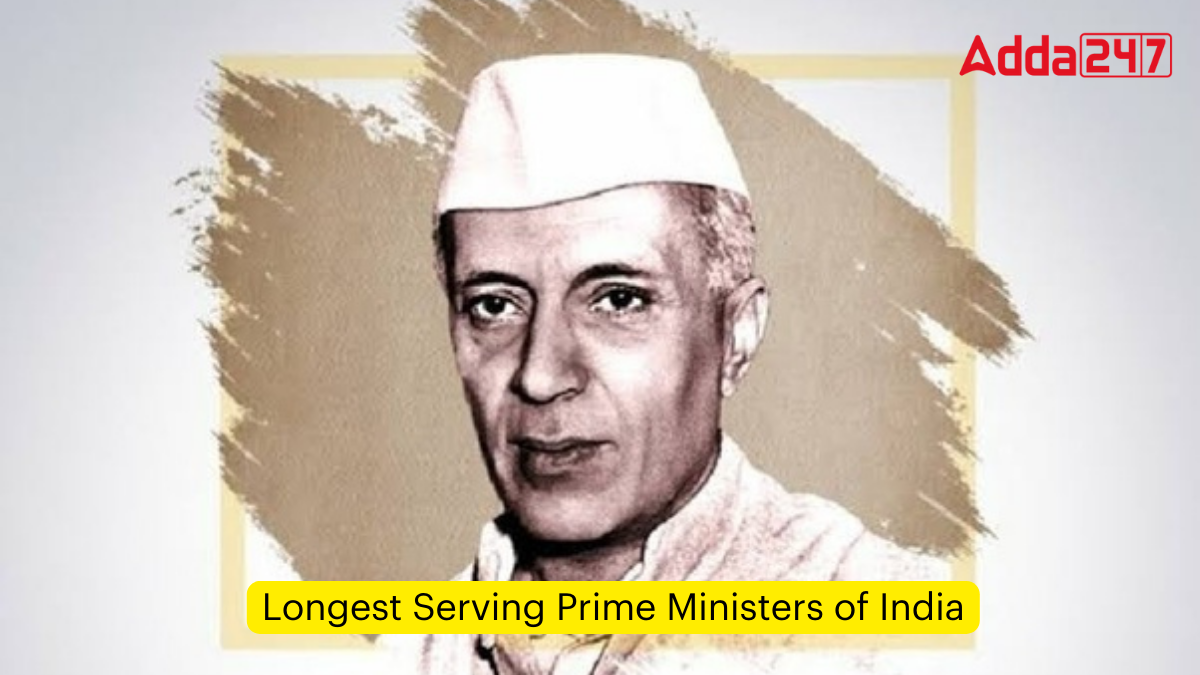India has seen a range of Prime Ministers since its independence in 1947, each bringing their unique leadership styles and visions. Here is a detailed analysis of the longest-serving Prime Ministers of India, highlighting their tenure and contributions.
1. Jawaharlal Nehru
Tenure: 15 August 1947 – 27 May 1964
Days in Office: 6,130 days
Overview: Jawaharlal Nehru, the first Prime Minister of India, served the longest. His tenure spanned over 16 years, during which he laid the foundation of modern India. He was a central figure in Indian politics both before and after independence. Nehru focused on industrialization, establishing educational institutions, and promoting a mixed economy.
Key Contributions:
- Established institutions of higher learning like IITs and AIIMS.
- Initiated the Non-Aligned Movement (NAM).
- Promoted scientific temper and technological advancements.
2. Indira Gandhi
Tenure: 24 January 1966 – 24 March 1977, 14 January 1980 – 31 October 1984
Days in Office: 5,829 days
Overview: Indira Gandhi, daughter of Jawaharlal Nehru, served as the Prime Minister for over 15 years. She is known for her decisive leadership and strong central policies. Her tenure was marked by significant events like the Green Revolution and the Emergency period.
Key Contributions:
- Green Revolution leading to self-sufficiency in food grains.
- Nationalization of banks.
- Strengthening India’s nuclear capabilities.
3. Narendra Modi
Tenure: 26 May 2014 – Present
Days in Office: Ongoing (as of 4 June 2024, 3,666 days and counting)
Overview: Narendra Modi, serving since 2014, has introduced several transformative policies and reforms. His leadership style is characterized by strong central control and emphasis on digitalization and infrastructure development.
Key Contributions:
- Launch of the Goods and Services Tax (GST).
- Introduction of the Pradhan Mantri Jan Dhan Yojana.
- Implementation of the Swachh Bharat Abhiyan.
4. Manmohan Singh
Tenure: 22 May 2004 – 26 May 2014
Days in Office: 3,656 days
Overview: Manmohan Singh, an economist and technocrat, served as Prime Minister for a decade. His tenure was marked by economic reforms and efforts to improve India’s global standing. Singh is credited with liberalizing the Indian economy in the 1990s as Finance Minister.
Key Contributions:
- Implementation of the National Rural Employment Guarantee Act (NREGA).
- Signing the Indo-US Nuclear Deal.
- Advocating for inclusive growth.
5. Atal Bihari Vajpayee
Tenure: 16 May 1996 – 1 June 1996, 19 March 1998 – 22 May 2004
Days in Office: 2,272 days
Overview: Atal Bihari Vajpayee served three terms as Prime Minister. His longest tenure was from 1998 to 2004. Vajpayee is remembered for his eloquence, economic reforms, and efforts towards peace with Pakistan.
Key Contributions:
- Pokhran-II nuclear tests.
- Implementation of the Golden Quadrilateral highway project.
- Initiation of the Sarva Shiksha Abhiyan.
Detailed Analysis
Table of Longest Serving Prime Ministers of India
| Prime Minister | Tenure Start | Tenure End | Total Days in Office |
|---|---|---|---|
| Jawaharlal Nehru | 15 August 1947 | 27 May 1964 | 6,130 |
| Indira Gandhi | 24 January 1966 | 24 March 1977, 14 January 1980 – 31 October 1984 | 5,829 |
| Narendra Modi | 26 May 2014 | Present | 3,666+ |
| Manmohan Singh | 22 May 2004 | 26 May 2014 | 3,656 |
| Atal Bihari Vajpayee | 16 May 1996 – 1 June 1996, 19 March 1998 – 22 May 2004 | 2,272 |
Analysis
Jawaharlal Nehru’s Legacy: His long tenure helped stabilize the newly independent nation, emphasizing scientific progress and democratic principles. Nehru’s vision of a secular, socialist India influenced his policies and left a lasting impact on the country’s development trajectory.
Indira Gandhi’s Influence: Indira Gandhi’s leadership was marked by bold decisions and controversial policies. The Green Revolution transformed India’s agricultural landscape, while the Emergency period remains a debated chapter in Indian history. Her assassination in 1984 abruptly ended her impactful tenure.
Manmohan Singh’s Economic Reforms: Singh’s tenure saw steady economic growth and significant international partnerships. His calm and composed leadership style earned him respect, despite criticisms regarding policy paralysis in his later years.
Narendra Modi’s Transformational Policies: Modi’s ongoing tenure is marked by ambitious initiatives aiming at economic reform, digitalization, and infrastructural development. His tenure has seen significant electoral successes and controversial policies, reflecting a polarizing yet impactful leadership.
Atal Bihari Vajpayee’s Statesmanship: Vajpayee’s time in office is noted for economic liberalization, infrastructure projects, and efforts to improve relations with neighboring countries. His tenure is often remembered for a balanced approach combining economic progress with social initiatives.




 Exploring Bondi Beach: Sun, Surf and Syd...
Exploring Bondi Beach: Sun, Surf and Syd...
 Chakrashila Wildlife Sanctuary: Location...
Chakrashila Wildlife Sanctuary: Location...
 Which Forest is Known as the Monsoon For...
Which Forest is Known as the Monsoon For...







